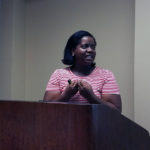WACO—Nativity depictions—from paintings in the Middle Ages, to stained glass imagery, to contemporary scenes in suburban front yards—often feature a donkey and ox near the manger where Baby Jesus slept. But that likely wouldn’t be the case if not for the so-called “Lost Gospels,” a historian at Baylor University noted.
 While the Gospel of Luke mentions shepherds and a manger, nowhere in the New Testament accounts of the nativity do cattle or donkeys appear, said Philip Jenkins, author of the new book The Many Faces of Christ: The Thousand-Year Story of the Survival and Influence of the Lost Gospels.
While the Gospel of Luke mentions shepherds and a manger, nowhere in the New Testament accounts of the nativity do cattle or donkeys appear, said Philip Jenkins, author of the new book The Many Faces of Christ: The Thousand-Year Story of the Survival and Influence of the Lost Gospels.
Instead, they figure into a noncanonical account known as “Pseudo-Matthew,” said Jenkins, distinguished professor of history in Baylor’s Institute for Studies of Religion.
Conventional wisdom suggests the church selected four Gospels—Matthew, Mark, Luke and John—while other collected stories about Jesus were lost, hidden or obliterated.
 Philip Jenkins But Jenkins’ research suggests the early church never really lost many of the other accounts. Instead, they remained influential until the Reformation—and even today play a major role in shaping the beliefs of some Christians, although they may not realize it.
Philip Jenkins But Jenkins’ research suggests the early church never really lost many of the other accounts. Instead, they remained influential until the Reformation—and even today play a major role in shaping the beliefs of some Christians, although they may not realize it.
“There’s this kind of myth that all these gospels went underground around the year 400 and were destroyed or lost,” Jenkins said.
But numerous have been found since the late 1770s—perhaps most notably in 1945, when farmers found a sealed jar near caves not far from the Egyptian city of Nag Hammadi. Inside were a dozen leather-bound papyrus books containing more than 50 texts, including some quotations attributed to Jesus.
Although church leaders centuries before did not ultimately accept as genuine sacred accounts such writings as “the Gospel of Nicodemus,” “Gospel of James” and various gospels of Mary, the accounts nevertheless were well known during the spread of the church, Jenkins said.
In Ireland, which began converting to Christianity in the fifth century, “people were freely using gospels that nobody knew hadn’t been approved,” Jenkins said. While today word travels fast via the Internet, “It’s as if centuries ago, they didn’t get the memo.”
Sign up for our weekly edition and get all our headlines in your inbox on Thursdays
During the Middle Ages, people even used some of the texts as the basis for poems and “mystery plays,” Jenkins said.
“These are probably plays that Shakespeare saw, and they probably disappeared around the time he was in his teens,” he said.
Some of the writings continue to have a strong impact today—particularly in Eastern Orthodox churches, Jenkins said. Some are considered canonical in Ethiopian churches, he added.
“However completely a text seems to have disappeared, its words and images often survived and were accepted, provided they met a powerful popular need,” Jenkins writes in his book. “Demand trumped censorship.”
Editor’s Note: The 7th paragraph was corrected after it was originally posted to correct an editing error, making reference to the Dead Sea Scrolls.














We seek to connect God’s story and God’s people around the world. To learn more about God’s story, click here.
Send comments and feedback to Eric Black, our editor. For comments to be published, please specify “letter to the editor.” Maximum length for publication is 300 words.